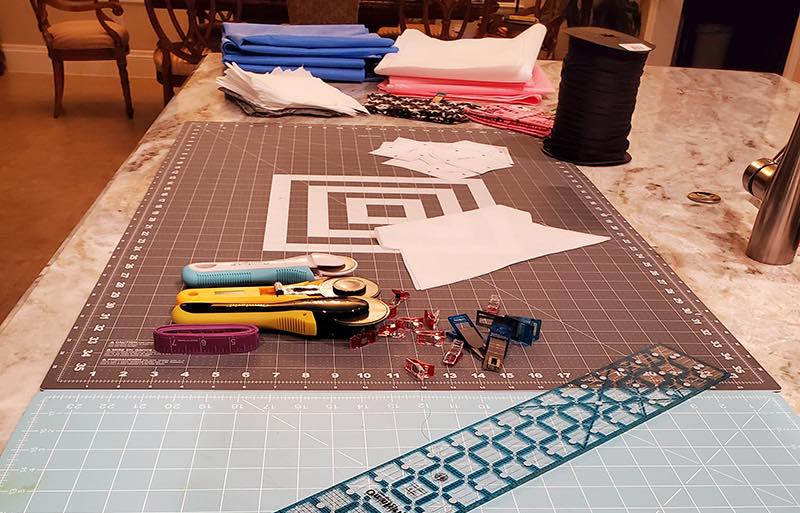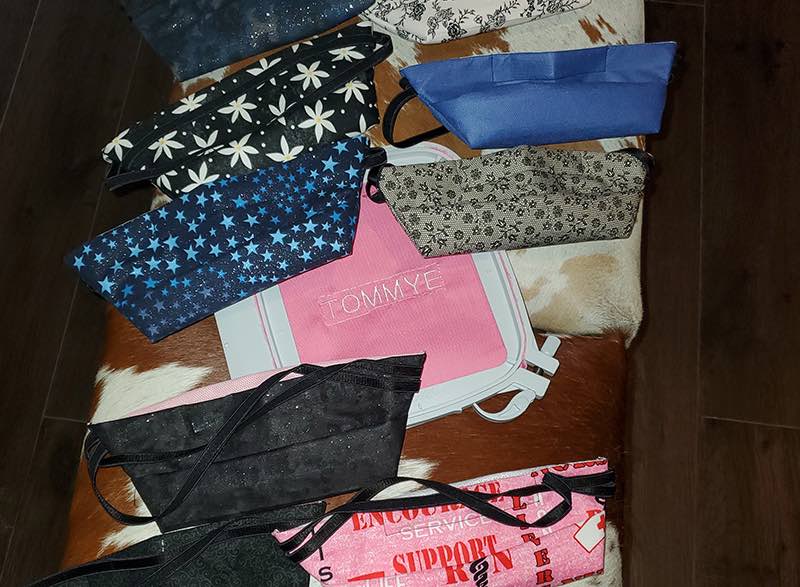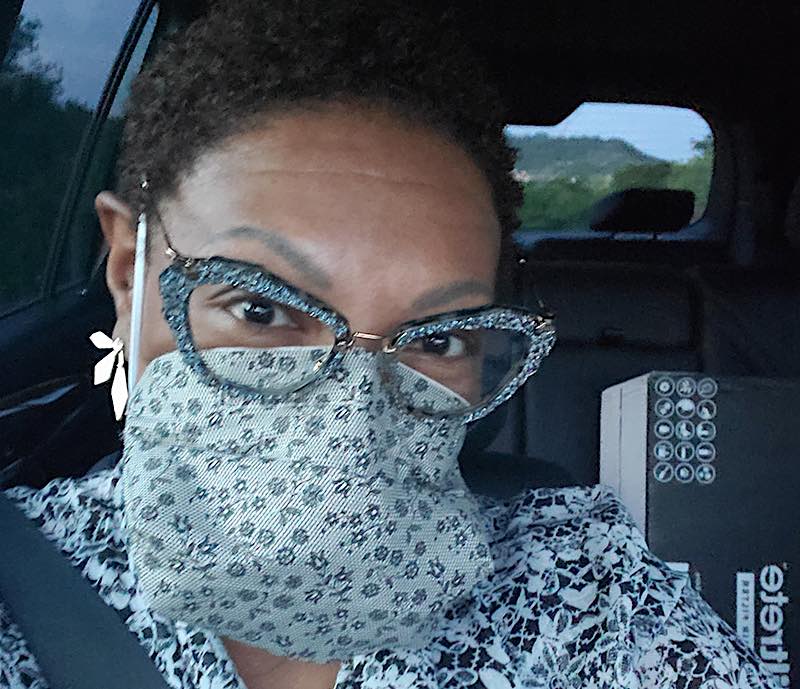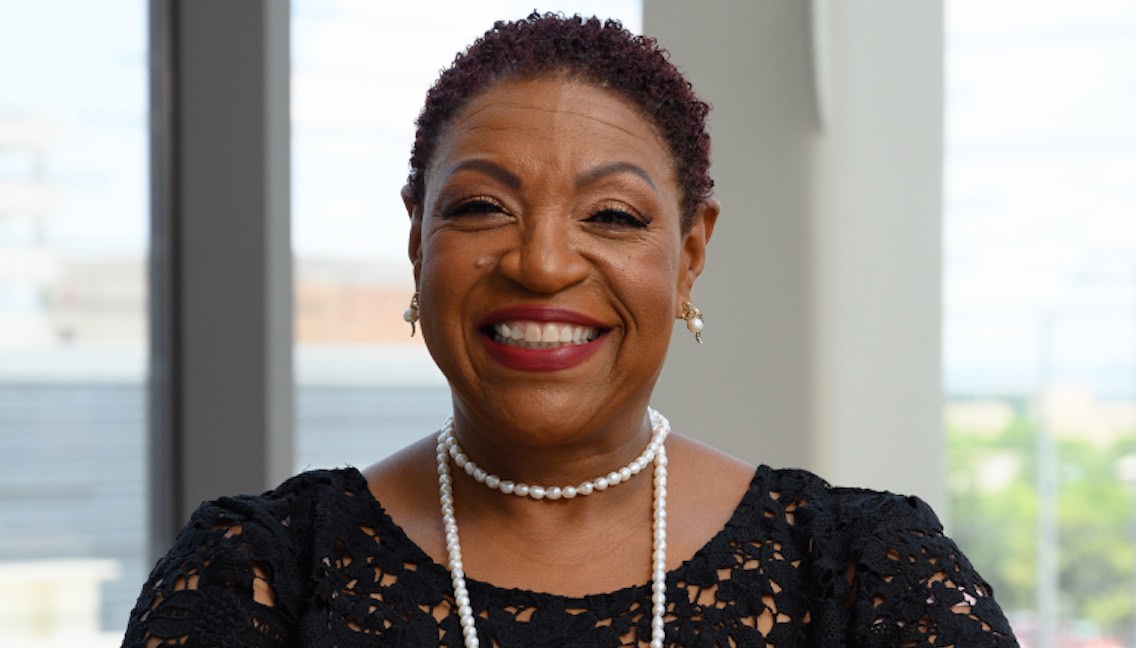As Tommye Austin made her way around the COVID-19 unit in early April, she worried about how long her nurses were going to have the supplies they needed to protect them from the virus.
Her San Antonio, Texas, hospital was well stocked, but with a surge of cases expected in May, the senior vice president and chief nurse executive, worried whether there would be enough N95 masks—especially with every hospital in the world seeking them.
Then she remembered what her late husband always said: “If you can’t find something, and you can’t buy something, you make it.”
So that’s what Tommye did—the nurse-scientist whose resume is crammed with credentials, like R.N., Ph.D., MBA and NEA-BC (Nurse Executive Advanced-Board Certified), began building a better mousetrap.
In her rare free time, she enjoys embroidery and quilting at her sewing machine, but even with all her skills and credentials, it was a challenge to design an N95 equivalent.
Even after long days at her University Health System job, she worked through the night to perfect her mask.

She remembered her husband teaching her about the best air conditioning filters for their home being electrostatic: they were worth the higher price because they carry a charge that zaps more gunk from the air. So, when Tommye went shopping for materials for this project, she remembered the word ‘electrostatic’.
At about $25 each, Tommye bought three different filter models, cut through their paper and wire frames, and got to work.
“The efficiency of each model was around the same, but one was more pliable,” she said. “It gave your mask a nice shape and was very breathable.”
Her biggest challenge was getting the mask to fit snug over the nose and mouth – but not so tight that it would damage the skin. And it still had to leave room for carbon dioxide to escape.

For more than a week, Tommye came home from work and tinkered practically all night. Her initial $300 purchase was supplemented by another $2,000 worth of gear.
As she closed in on a prototype, she struggled with the final piece of the comfort-safety puzzle. Then she extended the fabric on the nose and pleated that extension. Voila—more air pocket, no added bulk.
POPULAR: Homeschooled 12-Year-old Boy Designs COVID-19 Protection Device – The Safe Touch Pro
It only took her ten days to design the TM 2020 (‘Tommye Mask’). And, it only took 24 hours and a local TV news story for it to become an internet sensation. By the next day, her masks had been showcased by Fox News and the New York Post.

The hospital was so inundated with requests for details that it posted step-by-step instructions later that week. At that point, Tommye only had the instructions in her head.
A Better Mousetrap
- The name N95 comes from the fact the masks filter 95% of airborne particles, such as viruses. Lab results show Tommye’s masks block 96.5%.
- N95s weren’t intended for all-day use, so they tend to carve painful, unsightly marks into noses, cheeks and chins. Hers don’t.
- With nowhere for exhaled carbon dioxide to escape, N95 wearers sometimes suffer dizziness or headaches. Hers have an air pocket so the C02 floats more easily away.
Although the TM 2020 is meant for non-commercial purposes, Tommye received over 1,500 offers from people willing to buy them. Messages have come from as far as Indonesia and South Africa.
After speaking with an old friend, Tommye heard that her daughter was a nurse in Houston, and had been using the same N95 mask for nearly two months. Brittany got a TM 2020 in the mail the next day.
Thousands of her mask have been created, so far, but only Tommye and a few others are wearing them at her hospital. Everyone else on the staff has access to barrier/surgical masks, N95 respirator masks, face shields, and hospital-issued scrubs.
RELATED: Study Finds Best Material for Homemade Face Masks May Be Two Fabrics Combined
Thanks to Tommye’s concern for nurses needing a backup in San Antonio, the TM 2020s are helping people to feel safer around the world, according to American Heart Association News.
SHARE This Nurse’s Mask Design With Friends on Social Media…
Need more positive stories and updates coming out of the COVID-19 challenge? For more uplifting coverage, click here.




















